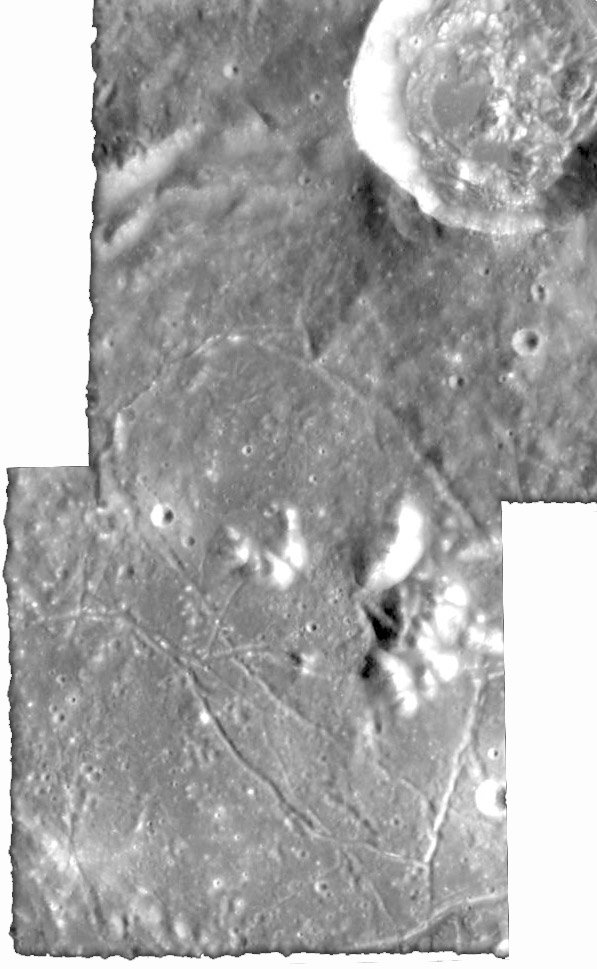
image by ESA/SPACE-X, Space Exploration Institute
We infrequently see images, especially mosaics, that are such close-ups that they show only the interior of a crater, but that is what we get with this high resolution view of Gassendi by SMART-1. Compared with the excellent telescopic image of Gassendi by Bruno Daversin, this spacecraft rendition shows more small pits but only a few additional rilles - for example, in the bottom third of the picture see the narrow diagonal rille between the two larger nearly parallel ones. The SMART image also shows a degraded secondary crater chain near the bottom right, and the two conspicuous rilles on the right and upper right that follow the curvature of the rim appear to have once contained pits (like the Hyginus Rille) but they are being eroded into oblivion. Gassendi A (upper right) at first glance looks like a floor-fractured crater, but its rim-concentric structure is really just material that has slumped down the crater’s walls. The dark smooth ponds on the floor look like possible mare lavas, but the Clementine color ratio image shows they are red, like the highlands - perhaps the ponds are impact melt.
Technical Details:
13 January, 2006. Advanced Moon micro-Imager Experiment (AMIE) camera on SMART-1 spacecraft.
Related Links:
Rükl plate 52
COMMENTS?
Click on this icon File:PostIcon.jpg at the upper right to post a comment.



